Faster and longer, lower spin or more forgiveness – which is the Best TaylorMade Driver for you in 2024?
Last updated:
What is the best TaylorMade driver for you? Our launch monitor-backed test reveals all.
The best TaylorMade drivers have been at the forefront of golf club innovation for more than 40 years as the company name is down as producing some of the best golf drivers of all time.
TaylorMade’s first steel-headed driver – the Pittsburgh Persimmon that launched in 1979 – helped revolutionize the club-making industry and, in the mid-2000s, the TaylorMade R7, the first movable weight driver, was another major innovation. Since 2021 the company has dedicated itself to making carbon face drivers which they insist improve the impact efficiency of the most recent 2022 Stealth, 2023 Stealth 2, and 2024 Qi10.
Today, TaylorMade makes three main driver options for shots from the tee, there’s also a BRNR mini driver that can be used from the tee (possibly as a driver replacement), and so long as you have plenty of speed the fairway. No matter, whether you’re Rory McIlroy, a decent club player, or a beginner golfer there’s a TaylorMade driver out there for you, here’s my rundown on how to choose which is best for your game in 2024.
Best TaylorMade Driver – Jump to:
- What type of driver do you need?
- The Best TaylorMade Driver
- How we tested the drivers
- Buying Advice & FAQs
What type of driver do you need?
Low Spin
The best low-spin drivers have more weight positioned closer to the face rather than towards the rear like more forgiving models. By stacking weight in a more forward position the center of gravity (the point the club rotates around) is drawn closer to the face. With a more forward center of gravity (CG) low spin drivers react differently at impact compared to back-weighted forgiving models. It’s this impact reaction that reduces spin.

Thanks to their more forward CG low-spin drivers have lower MOI ratings, which means they are less forgiving on off-center strikes. Low spin drivers typically work best for golfers with above-average levels of swing speed, as speed typically generates more spin. Low spin drivers will generally produce faster ball speeds than more back-weighted models (as more mass is located closer to the impact location), so they’re often the longest but least forgiving option and golfers need decent levels of speed to get the best out of them.
It’s no secret that golfers who hit the longest drives have upward attack angles onto the back of the ball (which reduces spin and adds distance much more so than downward driver attack angles), so low spin drivers are often designed to compliment this motion. It’s entirely possible if a low spin driver is put into the hands of a downward attack angle golfer spin rates will increase and not reduce. TaylorMade’s best low-spin driver option in 2024 is the Qi10 LS.
Draw Bias/Easy to Square
The average club golfer has a handicap of 18 with a typical swing speed hovering around 92/93 mph. Research has shown a majority of these players will hit shots from left to right with a slice (for a right-handed golfer). ‘Slicers’ create more spin, which robs distance and shots frustratingly end up down the right side of the golf course, so most golf club brands produce a ‘Draw Bias’ driver to help counteract the effects of a slice. Ping make the G430 SFT, Callaway makes the Ai Smoke Max D whereas TaylorMade’s offering is the Qi10 Max.

The Qi10 Max is a little different from most ‘draw drivers’ as TaylorMade says it has been designed to be an ‘easy to square’ model (as they believe golfers don’t understand what draw bias does or means). Draw bias drivers have weight positioned more towards the heel, so the head naturally wants to rotate around this heel side center of gravity at impact, which closes the face and helps counteract the effects of a slice.
Lots of golfers believe draw drivers are their most forgiving driver option, however as heel weight is usually further forward than an all-out forgiveness model like the Ping G430 Max this isn’t always the case. An exception to the rule is the TaylorMade Qi10 Max which has an MOI of 10,000 gcm2 and is the company’s easiest to square and most forgiving model.
Forgiving/All round performance
If you don’t have a super-fast swing speed and a slice doesn’t plague your game it’s highly likely you’ll benefit from a driver that offers a blend of both distance and forgiveness. Modern all round performance drivers typically have a tiny bit of left bias built in (for right-handers), so their center of gravity location sits somewhere between low spin and the best draw models.

The most forgiving drivers are a great option for golfers prone to spraying shots across the entire face of their driver. TaylorMade’s Qi10 falls within this category, as does the Callaway Ai Smoke Max, Ping G430 Max, and Titleist GT2.
Mini Driver
Mini Drivers are a pretty modern invention they can serve several purposes for very different players. Mini Drivers have a smaller head size, which is more aerodynamic than a typical driver (300cc rather than 460cc). The size reduction means it’s possible to pick up speed, so even though Mini Drivers usually come with higher lofts (11.5° or 13.5°) golfers can often see very little distance difference between the pair. Some golfers see the Mini Driver as an alternative to their regular driver off the tee, the shorter shaft length can boost confidence, improve consistency, and up accuracy while giving up very little in terms of ball speed and distance.

The smaller head size and extra loft mean higher speed players, like Tommy Fleetwood hit the Mini Driver from the fairway (expect a stronger loft than most fairway woods) which can bring the very longest of Par 5s within reach in two shots. Mini Drivers can be a really versatile option, but from all the testing we’ve done you will need strong levels of speed to launch one to a good peak height to get maximum distance from the fairway.
If you’re looking to use the TaylorMade BRNR Mini Driver more from the tee I’d suggest looking at the 11.5° loft whereas if you’re after a super strong option from the fairway the 13.5° loft would be a more sensible choice.
Best TaylorMade Drivers: At a glance
Best for lowering spin: TaylorMade Qi10 LS | VIEW UK OFFER | VIEW US OFFER
Most forgiving: TaylorMade Qi10 Max | VIEW UK OFFER | VIEW US OFFER
Best for overall performance: TaylorMade Qi10 | VIEW UK OFFER | VIEW US OFFER
Most versatile: TaylorMade BRNR Mini | VIEW UK OFFER | VIEW US OFFER
Best for slicers: TaylorMade Qi10 Max | VIEW UK OFFER | VIEW US OFFER
Best for women golfers: TaylorMade Kalea Gold | VIEW UK OFFER
Best TaylorMade Drivers 2024
The low launch and low spin weapon of choice of Rory, Tiger, and Scottie.
In our fastest ball speed setting the LS was just 2 yards back from our test pro's very longest low spin driver of 2024, and once dialled into his preferred and more stable Mitsubishi Diamana X flex shaft, the shot area tightened by 84.3% to 179.2 yds2 – the 2nd smallest in our entire 2024 driver test.
If you’re a high-speed player I’d advise studying how the LS compares to TaylorMade’s Qi10 driver too. TaylorMade staffers Rory McIlroy and Scottie Scheffler have both played the LS and standard model in 2024 so don't immediately think all good players use the lower spin option.
TG Test Pro Data (Diamana X shaft):
Ball Speed: 160.4 mph | Backspin: 2260 rpm | Carry: 274 yds | Shot Area: 179.2 yds2
Read our full TaylorMade Qi10 LS driver review.
Pros
- I love how the Infinity Edge crown does away with the unforgiving look of the sliver of titanium at the front of the head.
- A great option for high-speed players looking to control spin.
- Long-term TaylorMade fans will love the head shape.
Cons
- A great driver, just be aware it's the least forgiving model in the Qi10 family.
| Lofts | 8° / 9° / 10.5° |
| Stock shafts | Mid Launch - Mitsubishi Tensei AV Limited Blue 65 (X/S/R)<br>Low Launch – Mitsubishi Tensei AV Ltd Black 65 (X/S) |
| Stock grip | Golf Pride Z-Grip Plus 2 |
TaylorMade's most forgiving driver to date is the complete package.
In the hands of our test pro, the Qi10 Max produced a ball speed comfortably above our forgiving driver test average. It was also within 2 yards of our very longest driver (with a stock shaft) for carry distance. Numbers that could easily be reversed on another day’s testing.
Throw in a 2nd tightest shot area (dispersion) and you have a powerful and incredibly accurate TaylorMade driver on your hands. In my eyes, and based on our test data, as a golfer who’s never played a TaylorMade driver before, the Qi10 Max is one of the best big dogs available in 2024.
TG Test Pro Data (8.5°, Diamana X shaft):
Ball Speed: 162.4 mph | Backspin: 2201 rpm | Carry: 270 yds | Shot Area: 337.5 yds2
Read our full TaylorMade Qi10 Max driver review.
Pros
- Finally a super forgiving TaylorMade driver.
- The bigger profile is confidence inspiring at address.
- The extreme shape and weighting might mean you can use a little less loft to get more ball speed.
Cons
- I honestly don't see any.
| Lofts | 9° / 10.5° / 12° |
| Stock shafts | High Launch: Speeder NX TCS<br>Mid-Launch: Mitsubishi Diamana T+60 |
| Stock grip | Golf Pride Z-Grip Plus 2 |
Speed and forgiveness in a typical TaylorMade head shape
In 2024, thanks to TaylorMade revealing the super forgiving new 10K MOI Qi10 Max, things have changed somewhat.
TaylorMade drivers are always brilliant-looking beasts, but where the standard Qi10 differs from the Qi10 Max is how it comes decked out with a familiar streamlined TaylorMade driver head shape. With very little mass behind the heel, this model doesn’t generate the confidence of a Ping G430 Max or TaylorMade’s new Qi10 Max sat behind the ball on a tee. If though you’ve used TaylorMade drivers before and liked them the Qi10 is still likely to be a very good fit for you.
I like how the new infinity crown runs all the way to the top edge of the face. It does away with the thin slither of titanium that historically has given TaylorMade drivers quite an unforgiving look over recent generations. It goes without saying, as this model will be played by some of the best players in the world the sound is muted yet powerful, and from my experience the harder you hit them the better they sound.
TaylorMade drivers rarely disappoint on data spreadsheets, they’re reputation for being fast and powerful has been built over decades. The issue in 2024 is the Qi10 is up against the Qi10 Max which is brilliant at preserving ball speed on off-center hits. I'm splitting hairs when I say the Qi10 posted numbers 5 yards back from our very longest forgiving driver. As I know on another day’s testing the data could well be more closely matched or even reversed.
For me the important numbers to consider this year, should you find yourself drawn to the standard Qi10 is how our test pro hit the Qi10 Max 3 yards further and was more accurate with it. Those numbers at least should make you think about why you put such a serious premium on head shape to play a more streamlined model. When in reality it brings so little merit in on-course gains.
I completely understand not everyone wants to play the bigger profile Qi10 Max head, but even golfers like TaylorMade staffer Nelly Korda think it’s the right choice for her bag. If you’re familiar with and like previous TaylorMade driver heads then absolutely do not switch to the Max for a fraction more forgiveness.
All in the standard Qi10 is an excellent driver, in my book it’s more than capable of taking on any competitor models in 2024.
TG Test Pro Data (10.5°, Diamana X shaft):
Ball Speed: 159.2 mph | Backspin: 2338 rpm | Carry: 267 yds | Shot Area: 385 yds2
Read our full TaylorMade Qi10 driver review.
Pros
- Excellent for golfers who want forgiveness but insist on playing a familiar TaylorMade head shape.
- A good blend of distance and forgiveness.
- The infinity crown is way nicer to look at than previous models.
Cons
- This model will easly be overlooked for the more forgiving Qi10 Max in 2024.
| Lofts | 9° / 10.5° / 12° |
| Stock shafts | Mid Launch - Mitsubishi Diamana T+60<br>Mid Launch - Fujikura Ventus TR Blue 5 |
| Stock grip | Golf Pride Z-Grip Plus 2 |
Versatility from the tee and fairway




He hit the BRNR (with its heaviest – 13.5g – weight in the back port to maximize launch and forgiveness) and his own driver from a tee, along with the BRNR and a Ping G430 Max fairway wood from the turf.
We like the BRNR’s look, feel, and sound, and with its retro shaft not being the strongest or stoutest, there’s extra help here for players attempting to launch shots from the turf.
From the tee, it gave up 7.3mph of ball speed and 12 yards of carry against our test pro’s own driver, his favorite club. From the deck the strong-lofted BRNR didn’t carry as far as the 15° Ping fairway, it did outrun it for total distance though, while shots launched and flew lower, and span less. Surprisingly, the lower loft also hit shots into a 23% tighter shot area than the Ping.
So is it worth buying one? If driving is your strength, probably not. But if you struggle to control a driver, the smaller but powerful head of the BRNR could be an absolute godsend. And if you’re a golfer who hits 3-wood a lot from the tee, the BRNR is a bigger, more forgiving, and powerful option.
TG Test Pro Data (BRNR Mini 13.5° from a tee):
Ball Speed: 155.2 mph | Backspin: 2613 rpm | Carry: 260 yds | Shot Area: 750 yds2
TG Test Pro Data (Own Driver 10.5° from a tee):
Ball Speed: 162.2 mph | Backspin: 2249 rpm | Carry: 282 yds | Shot Area: 656 yds2
TG Test Pro Data (BRNR Mini 13.5° from the turf):
Ball Speed: 152.7 mph | Backspin: 2702 rpm | Carry: 244 yds | Shot Area: 911.2 yds2
TG Test Pro Data (Own Fairway Wood 15° from the turf):
Ball Speed: 152.5 mph | Backspin: 3043 rpm | Carry: 257 yds | Shot Area: 1183.2 yds2
Read our full TaylorMade BRNR Mini Driver review
Pros
- The smaller head size is fast
- A versatile option
- The retro cosmetics are really appealing
Cons
- Only really a viable fairway wood option for a small group of higher speed players
| Lofts | 11.5° / 13.5° |
| Stock shaft | UST Mamiya ProForce 65 - Retro Burner Edition |
| Stock grip | Golf Pride TaylorMade Victory Copper |
Much like the TaylorMade Qi10 driver, the Kalea Premier boasts tour-proven tech (carbon crown and sole with an aluminum back ring and an Inertia Generator at the back of the sole) which have all been tuned to offer slower swing speeds and higher launch with additional MOI forgiveness.
Golfers also get the brands Twist Face tech which promotes increased consistency on common mishits from the low-heel and high-toe areas of the face. A flexible Thru-Slot Speed Pocket in the sole also helps retain ball speed for shots impacting low on the face.
Pros
- A very easy-to-launch driver option
- The shaping and profile are great
- The cosmetics are really appealing
Cons
- You don't get a carbon face, but at lesser speeds it has less impact
| RRP: | £449 |
| Lofts: | 11.5° and 13.5° |
| Stock Shaft: | 44” Kalea Gold Ultralight Graphite 40-L |
| Stock Grip: | SuperStroke Traxion Tour Navy/White 37g |
Data comparison: How the best TaylorMade drivers compare in numbers
| Driver | Ball Speed | Launch Angle | Backspin | Height | Descent Angle | Carry Distance | Shot Area |
| TaylorMade Qi10 LS (10.5° Tensei Blue S) | 163.6 MPH | 10.7° | 2338 RPM | 32 YDS | 37.8° | 275 YDS | 1148.4 SQ YDS |
| TaylorMade Qi10 LS (10.5° Diamana X) | 160.4 MPH | 12.5° | 2260 RPM | 36 YDS | 39.9° | 274 YDS | 179.2 SQ YDS |
| TaylorMade Qi10 Max (8.5° Diamana X) | 162.4 MPH | 9.6° | 2201 RPM | 27 YDS | 34° | 270 YDS | 337.5 SQ YDS |
| TaylorMade Qi10 (10.5° Diamana S) | 159.2 MPH | 10.6° | 2338 RPM | 30 YDS | 36.8° | 267 YDS | 385 SQ YDS |
| TaylorMade Qi10 Max (8.5° Tensei S) | 161.9 MPH | 8.6° | 2215 RPM | 24 YDS | 31.7° | 266 YDS | 630.5 SQ YDS |
| TaylorMade Qi10 Max (10.5° Tensei S) | 161.2 MPH | 9.8° | 2823 RPM | 32 YDS | 39.5° | 263 YDS | 404 SQ YDS |
Watch: The Best Drivers 2024 video
How we tested the drivers
To test golf equipment, we create a controlled indoor environment at Keele Golf Centre and use a premium tour-level golf ball (the Titleist Pro V1x). We collect data from every shot our test pro is happy with, using a Foresight GC Quad launch monitor. The women’s Kalea Gold driver was tested by TG Deputy Editor Sarah Pyett.
Find out more about how we test golf equipment.

Why do we use a Titleist Pro V1x golf ball?
It would be easy to use just one test golf ball brand every year, but that inevitably leads to criticism for being too closely aligned to one manufacturer, especially if that brand’s equipment performs particularly well. To ensure fairness we like to switch manufacturers for the Top Gear test ball each year. For 2024 we’ve used the Titleist Pro V1x.
The brand revealed the latest Pro V1x model in 2023, and Titleist’s Senior Director of Golf Ball Research and Engineering, Mike Madson says “Consistency means when a golfer tees up a Pro V1 or Pro V1x, every properly executed shot they make is going to deliver the performance they expect and the performance they trust.”
Thanks to the Titleist Pro V1 and Pro V1x mopping up mountains of tour wins across all global tours we know the model is trusted by the world’s very best.

Why do we use a pro tester?
Speak to any golf club engineer about product testing and they all talk about needing a repeatable, reliable strike to offer any sort of valuable comparison. So, whilst we accept not all of the equipment included within our tests was designed for our test pro, what our data shows is a great comparison of how clubs in each particular category differ, which is hugely valuable in helping you narrow your choice as a consumer.
In 2024 we’ve tested over 50 different drivers in many different settings, during which our test pro has needed to delete very few mishit shots. He’s hit the flag from 300 yards, he has hit fades, draws and nailed countless shots straight at his target, and he will also regularly hit 300 driver shots in a day. In short, Neil Wain is the perfect club tester due to his consistency in delivering accurate and reliable comparative data and he loves hitting balls all day long.
We would of course always recommend attending a proper fitting session, to ensure any purchase is tailored to your game.
Best TaylorMade drivers: buying advice & FAQs
What does the ‘Qi10’ name mean?
New for 2024 the TaylorMade Qi10 Max driver offers a huge 10K MOI without compromising on ball speed. The model offers up the company’s biggest MOI gain since the original Burner 44 years ago, so TaylorMade wanted a fitting name for their highest-ever MOI driver.
The Qi name is an amalgamation of the brand’s ‘Quest for Inertia’ and hitting the ‘10K’ barrier. An idea spurned by the company’s quest to produce the world’s most forgiving driver, without compromising on speed.
Should I consider buying a second-hand TaylorMade driver?
Absolutely do not write off buying a used TaylorMade driver, the brand has made plenty of excellent models over the years. Obviously, any used model from previous years won’t have the very latest game-improving technology built-in but many golfers would argue it’s hard to spot marginal gains between successive models. The average life expectancy for a driver is around five years, so you will see a difference between 5 – 8 year old models and the Qi10 available today.
If you really want a forgiving driver you have to look at the Qi10 Max even though it’s only been available in 2024 so will likely cost more money. The Max is TaylorMade’s highest-ever MOI driver but there should be some used and ready-for-resale models in the market. Always make sure you hit and try second-hand purchases before taking the plunge.

Which tour pros play TaylorMade drivers?
A decade ago TaylorMade was famous for paying huge swathes of tour pros to play their driver as part of their business model evolved around being the most played driver out on tour. Back then they even went so far as to trademark the ‘#1 Driver on Tour” slogan so no other brand could use it. Today the thinking at TaylorMade has changed, the company is now focused on a smaller group of elite athletes who play multiple TaylorMade products.
You’ll find TaylorMade drivers in the hands of Scottie Scheffler, Rory McIlroy, Collin Morikawa, Tommy Fleetwood, Nelly Korda, Charley Hull, and Brooke Henderson among others which means the brand is consistently seen to be winning on tour.
Which TaylorMade driver is most forgiving?
Without a doubt, TaylorMade’s most forgiving driver is the Qi10 Max, its MOI forgiveness rating is over 10,000 gcm2 like the Ping G430 10K Max and PXG Black Ops. If ultimate forgiveness is your goal this is the model for you.

How often does TaylorMade update their drivers?
A decade ago TaylorMade had a reputation for launching new products and within six months updating and superseding them with brand new models. Over time golfers got seriously annoyed at the practice, so much so the company has learned its lesson and these tactics have been banished from the business today.
Over the last 8 years, the company has committed to launching one new family of drivers (usually with three models to choose between) each January, with the addition of a new Mini Driver or Women’s family being introduced in the mid-season.
About the author

Simon Daddow
Today’s Golfer Equipment Editor
Having tested and played more than 10,000 clubs in his life, what Simon doesn’t know about golf clubs isn’t worth knowing.
He spent a large part of his career as a golf club maker and product development manager, and has worked in the golf industry for more than 30 years. He joined EMAP Active (now Bauer Media) as Equipment Editor in 2006 and has worked for both Today’s Golfer and Golf World.
You can contact Simon via email and follow him on Twitter for loads more golf equipment insight.
-
 The Best TaylorMade Drivers 2024
The Best TaylorMade Drivers 2024
-
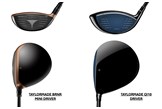 An image to show the difference in size between a mini and standard driver
An image to show the difference in size between a mini and standard driver
-
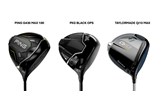 The three highest MOI drivers on the market in 2024 - Ping G430 Max 10K, PXG Black Ops and TaylorMade Qi10 Max
The three highest MOI drivers on the market in 2024 - Ping G430 Max 10K, PXG Black Ops and TaylorMade Qi10 Max
-
 Colin Morikawa hitting the TaylorMade Stealth 2 Plus Driver.
Colin Morikawa hitting the TaylorMade Stealth 2 Plus Driver.
-
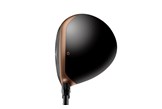 The TaylorMade BRNR Mini Copper Driver in the play position
The TaylorMade BRNR Mini Copper Driver in the play position
-
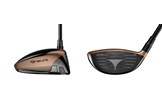 The TaylorMade BRNR Mini Copper Driver face and crown shape
The TaylorMade BRNR Mini Copper Driver face and crown shape
-
 The shape and detail of the TaylorMade BRNR Mini Copper Driver
The shape and detail of the TaylorMade BRNR Mini Copper Driver
-
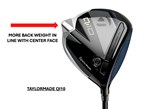
-
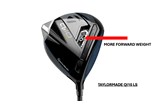 An image to show how more weight is positioned towards the front of the TaylorMade Qi10 LS Driver
An image to show how more weight is positioned towards the front of the TaylorMade Qi10 LS Driver
-
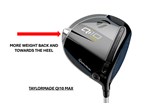 An image to show the back and heel sided weighting of the TaylorMade QI10 Max driver
An image to show the back and heel sided weighting of the TaylorMade QI10 Max driver
-
 The elite athletes who play TaylorMade drivers
The elite athletes who play TaylorMade drivers
-
 Tommy Fleetwood hitting the TaylorMade Stealth 2 Plus Driver.
Tommy Fleetwood hitting the TaylorMade Stealth 2 Plus Driver.












